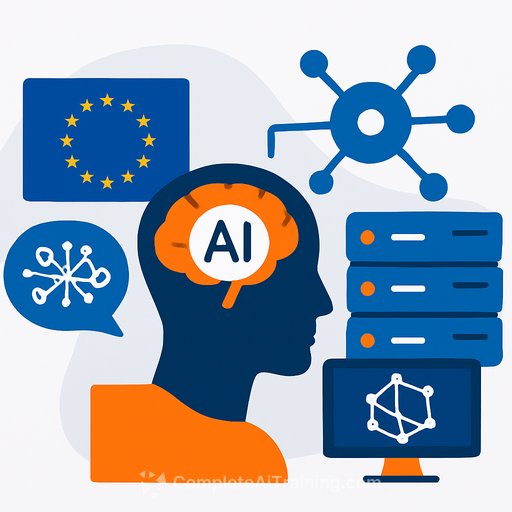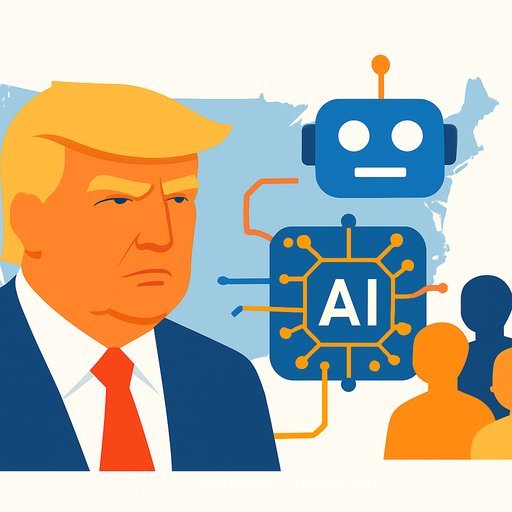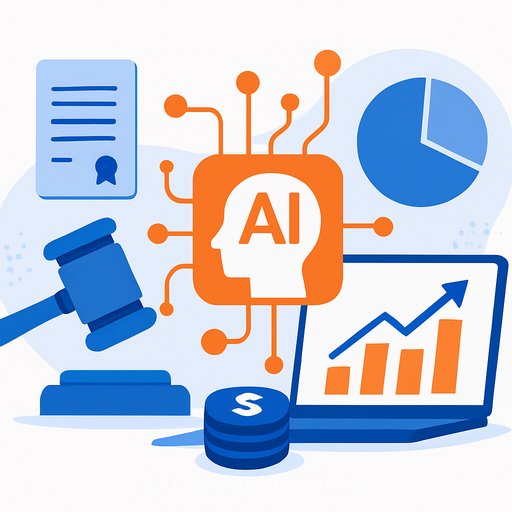EU backs an 'AI first' mindset: what legal, science, and research teams need to act on now
The European Commission has set out two AI strategies to push EU-wide adoption and productivity, with a clear message: put AI first by default, and build safety and compliance in from the start. Only 13.5% of EU businesses use AI today-the plan is to move that number fast.
- Apply AI strategy: compliance-by-design, sector actions, and support through 250+ digital innovation hubs refocused as "experience centres for AI".
- AI in Science (RAISE): a virtual institute pooling talent, compute, data, and funding to accelerate AI-driven discovery.
- Frontier AI initiative: EU-wide competitions for open models, free EuroHPC access, and a push on advanced architectures and high-quality data.
- Compliance support: an AI Act Service Desk, new high-risk classification guidelines, and pressure on member states to set up competent authorities.
The apply AI strategy: compliance and deployment at scale
The Commission will invite European companies to share models and systems with 250+ digital innovation hubs-now acting as AI experience centres-to drive deployment in strategic sectors. Expect structured signposting, pilot support, and pathways from proof-of-concept to production.
Compliance is foregrounded. A new AI Act Service Desk will help teams interpret obligations, test scope, and plan controls for both models and systems. The Commission will also publish guidance on high-risk classification and clarify how the AI Act fits with sectoral rules across health, energy, mobility, defence, and manufacturing.
Member states that have not designated AI Act competent authorities are being urged to do so. That matters for conformity assessments, oversight of high-risk systems, and consistent enforcement.
Implementation timing remains firm. Prohibitions already apply; general-purpose model rules kicked in on 2 August; high-risk system rules start next August unless the timeline changes.
Frontier AI and compute access
The Commission will coordinate a frontier AI initiative to bring industry and academia together on advanced capabilities, open models, and safer architectures. EU-wide competitions will fund open frontier models, grant free access to EuroHPC supercomputers, and make outputs available to public authorities and researchers.
For research teams, this is a direct route to training at scale and benchmarking reproducible results. For legal teams, start preparing IP, data licensing, and open-source compliance positions for participation.
European Commission: AI Act
EuroHPC Joint Undertaking
Sector actions: where to focus
- Health: steps to support AI-related medical devices entering the EU market and compute access for drug discovery targeting unmet needs (e.g., Alzheimer's, hard-to-treat cancers).
- Manufacturing: continuous support to move AI solutions from lab to production, plus trusted third-party data pooling while protecting IP and security.
- Mobility: use of AI factories and gigafactories to build models and shared software platforms for automated driving; real-world testing via joint ventures in EU cities.
- Defence and space: incentives for dual-use open architectures and dedicated compute for training defence/space models.
- Creative industries: a study on the legal issues of AI-generated outputs, with safeguards to detect and remove copyright-infringing content.
- Energy and public sector: AI to help balance the energy system and a stronger catalogue of tools for public bodies.
AI literacy, open models, and data
The Commission will fund targeted research on next-generation AI agents and expand workforce AI literacy. The strategies lean into open source and safety, with open models prioritized for public value and scientific reuse.
Legal and research leads should align data governance early: documented provenance, rights clearance, and security for pooled industrial datasets. Expect more detail in the upcoming EU data union strategy.
Compliance watchpoints for legal teams
- Scope and roles: clarify whether you are a provider, deployer, importer, or distributor under the AI Act; responsibilities differ.
- High-risk mapping: assess if your systems fall into Annex III categories; prepare for conformity assessment, risk management, and post-market monitoring.
- General-purpose models: confirm whether GPAI obligations apply, including technical documentation and systemic risk measures where relevant.
- By design: build data quality controls, logging, human oversight, and cybersecurity into development workflows now.
- Interplay with other law: align with MDR/IVDR in health, product safety in manufacturing, and data protection/IP across all sectors.
- Vendors and hubs: contract for compliance-ready deliverables if using DIHs or third parties; include audit rights, data rights, and incident reporting.
Practical steps for science and research teams
- Prepare grant-ready documentation: data sheets, model cards, evaluation protocols, and reproducibility assets.
- Design for openness where feasible: licensing, artifact release plans, and safeguards for safety and copyright.
- Line up compute plans: EuroHPC usage proposals, cost baselines, and fallback options for training and inference.
- Adopt evaluation beyond benchmarks: safety, bias, uncertainty estimation, and domain shift performance.
- Plan clinical or field validation early for health and mobility projects with ethics approvals and secure data access.
What's still in motion
No delay to AI Act milestones was announced. Watch for the Commission's high-risk classification guidance, the sectoral interplay note, and the data union strategy. These will set the tone for audits, enforcement, and data-sharing models in 2026 and beyond.
Quote to note: "I want the future of AI to be made in Europe… Putting AI first also means putting safety first. We will drive this 'AI first' mindset across all our key sectors, from robotics to healthcare, energy and automotive." - Ursula von der Leyen
Where to skill up next
If you're building an AI literacy plan for legal, R&D, or compliance functions, review curated course paths by role to accelerate adoption while staying within the EU rulebook. Courses by job
Your membership also unlocks:










